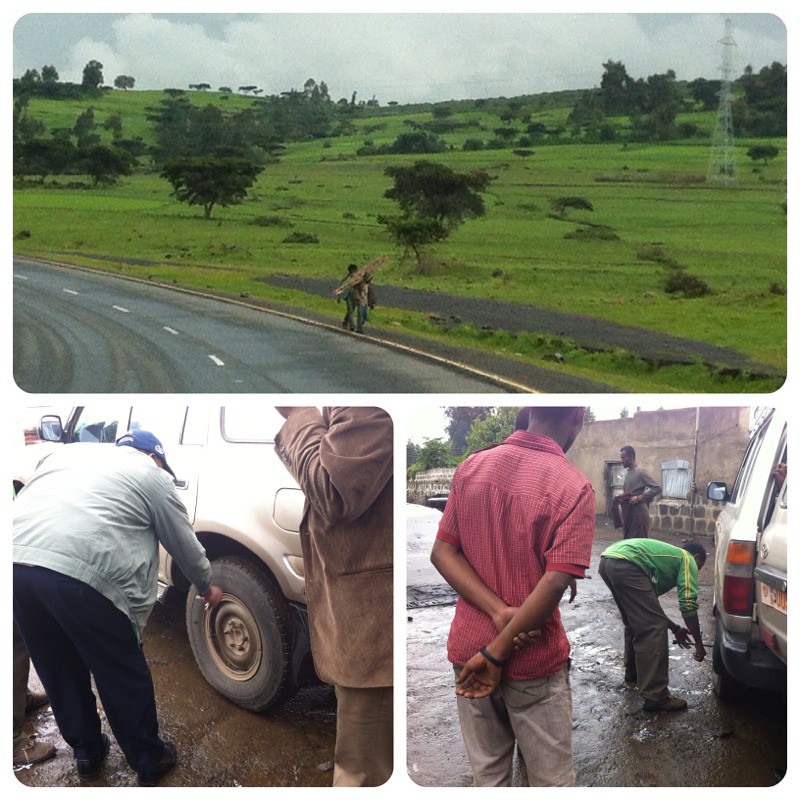
This morning we left Addis Ababa for Ambo in the second hour of the morning (8 AM). In Ethiopia, time is reckoned much like the Bible -- twelve hours of night and twelve hours of day. The sun rises at 6 am. The third hour of the morning is 9 am. Shortly after departing from Addis Ababa, our rear tire went flat.
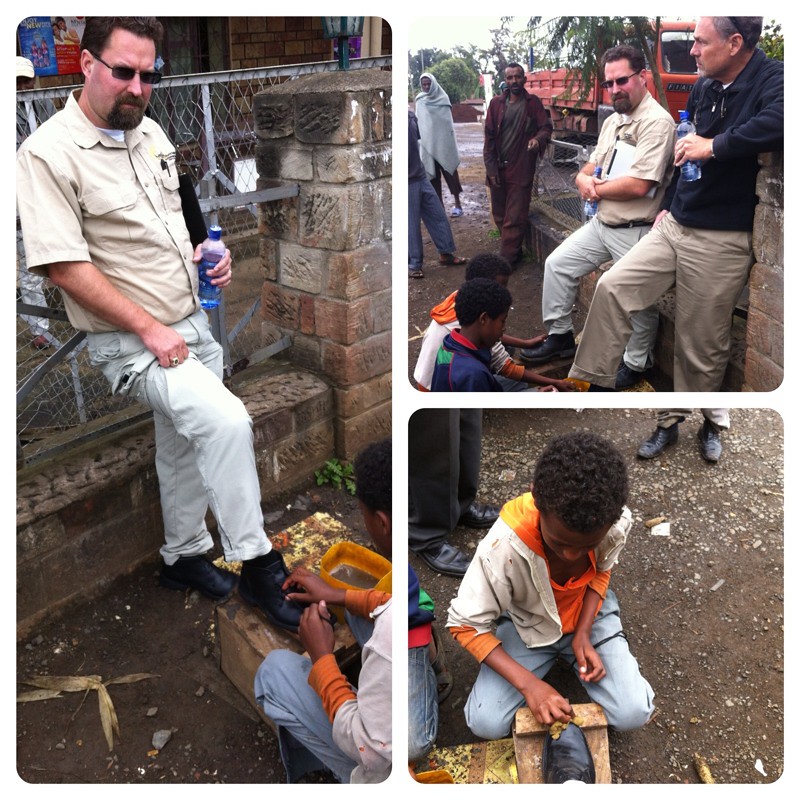
While waiting for the tire to be replaced, Drs. Collver and Lehenbauer had their shoes shined after President Abraham first had his shoes shined. The cost of each shoe shine was equivalent to about 15 cents in US currency. As meager as that sounds, the boys were thrilled to shine our shoes and to receive our wages. In fact, our Ethiopian hosts would not allow us to over pay the boys. So we paid the going rate.

The land between Addis Ababa and Ambo is primarily farm land. The land is farmed in the traditional way with ox drawn plows. Today was the day to plow as many, many farmers were plowing their fields.
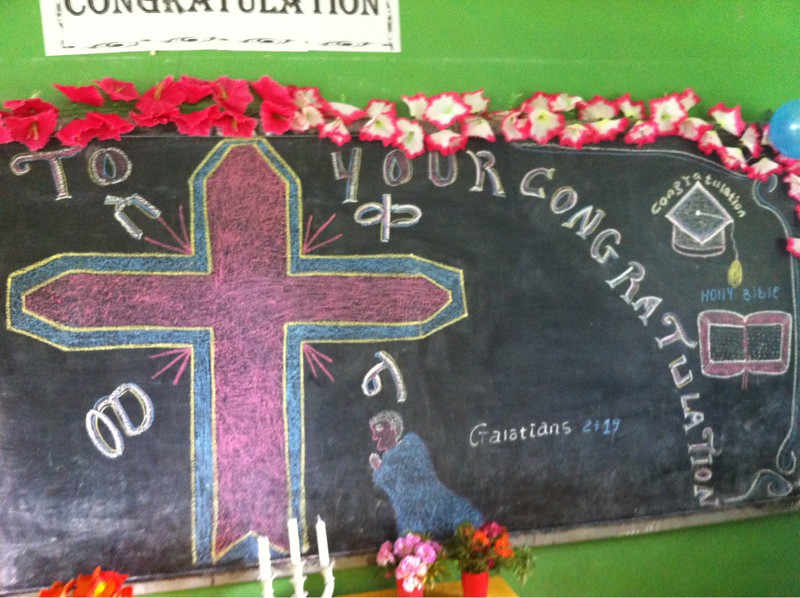
When we arrived in Ambo, we attended the graduation ceremony for seven evangelists.
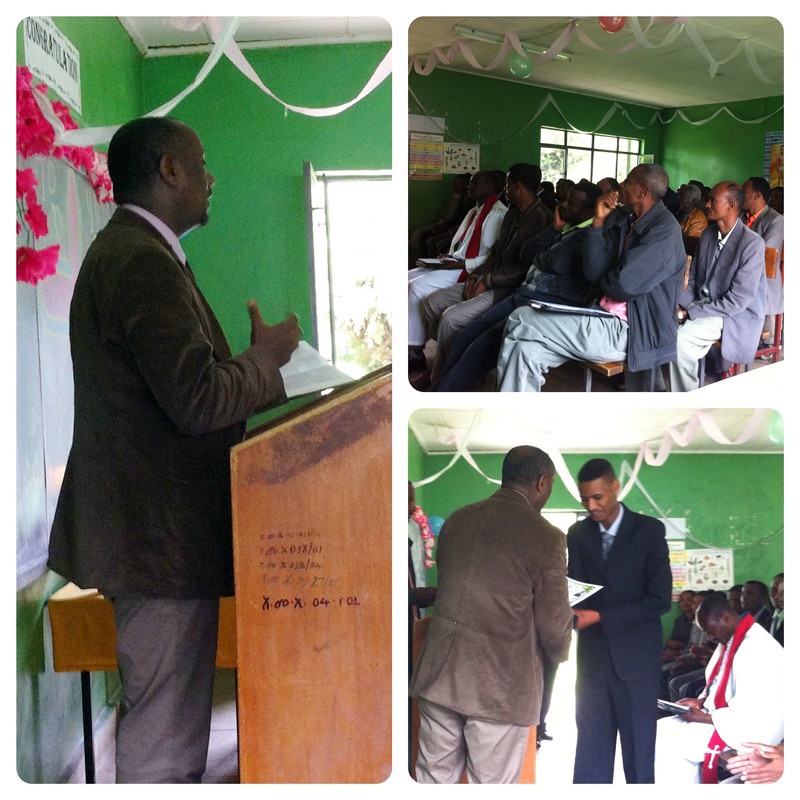
President Abraham of the Central Ethiopian Synod (EECMY) spoke to the graduating class and passed out the certificates. Twenty-three other students are half way through the two year, summer intensive program. An evangelist has the responsibility to preach to the non-believers near their assigned congregation, to visit congregation members, and to teach the catechism. They cannot celebrate the Lord's Supper, as that is reserved for the ordained pastors in the EECMY. Female evangelists have a very similar role to deaconesses in the LCMS -- teaching Sunday school, visiting the sick, and teaching adults.
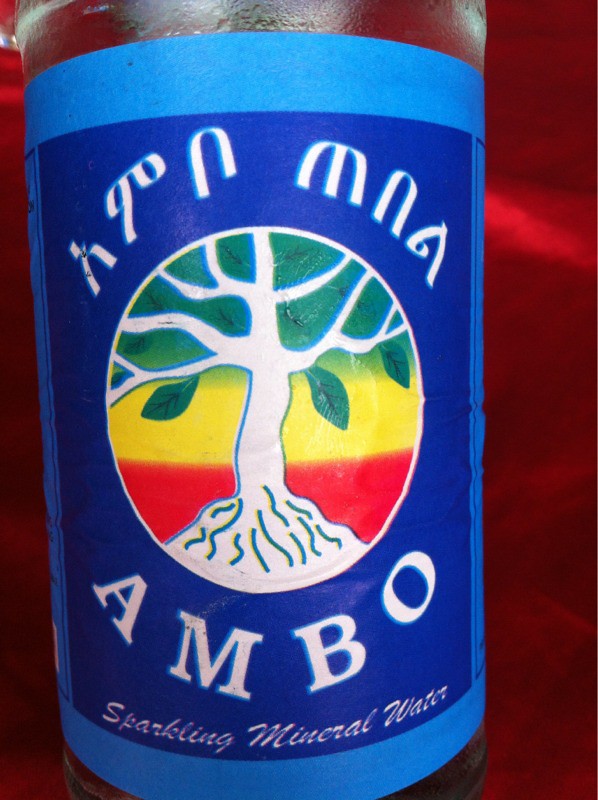
We ate lunch in Ambo, which is famous for its natural, sparkling mineral water. Over lunch we had a fascinating conversation regarding communion practice, casuistry items such as how to handle divorce in a congregation and when remarriage is permitted, and fellowship issues. President Abraham explained how during the communists years non-Lutheran protestants such as Presbyterians, Baptists, and Pentecostals merged into the EECMY as a fellowship union. This was a pragmatic move during the communist years, not unlike other Protestant groups calling themselves Lutheran during the Reformation. President Abraham explained how the EECMY recently broke this fellowship union with the other Protestants because they did not hold Lutheran doctrine. He also explained that only Lutherans commune at Lutheran altars. He said in fact the Baptists and Pentecostals consider the EECMY too close to the Orthodox and the Roman Catholics because the Lutherans believe that in Holy Communion Christ gives his body and blood to eat and to drink. The conversation was very helpful. After lunch we visited some congregations in the Ambo region.
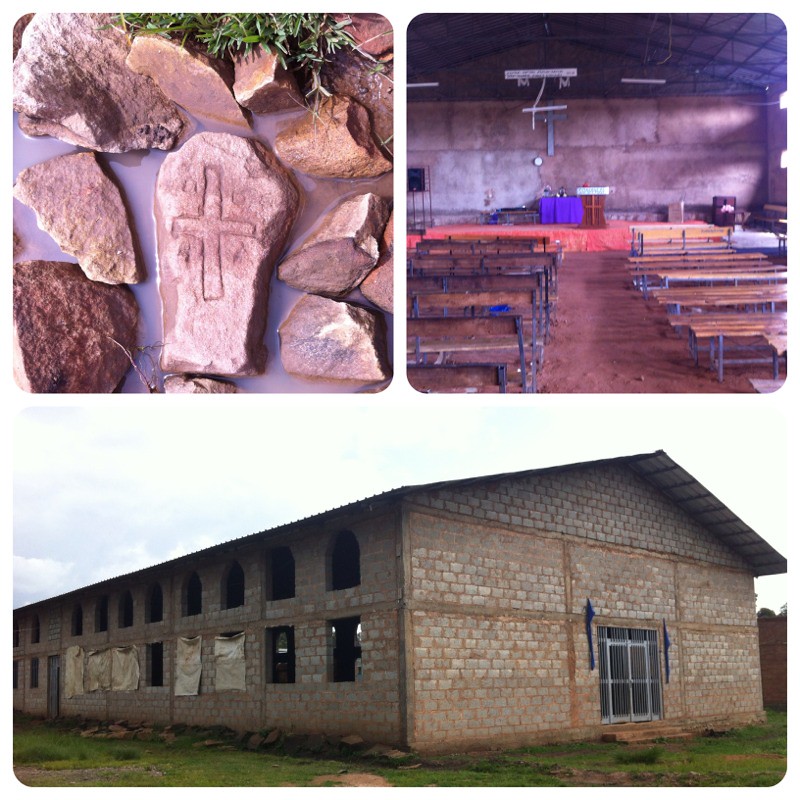
The Ambo Parish has 32 congregations and 12 preaching stations. It is one of the fastest growing areas inside the EECMY. In fact, it seems that the church buildings cannot keep up with the number of people attending church on a Sunday. The congregation pictured above is 4 years old and has 1,300 communicant members with 1,800 members total. Last year, the congregation added 357 members.
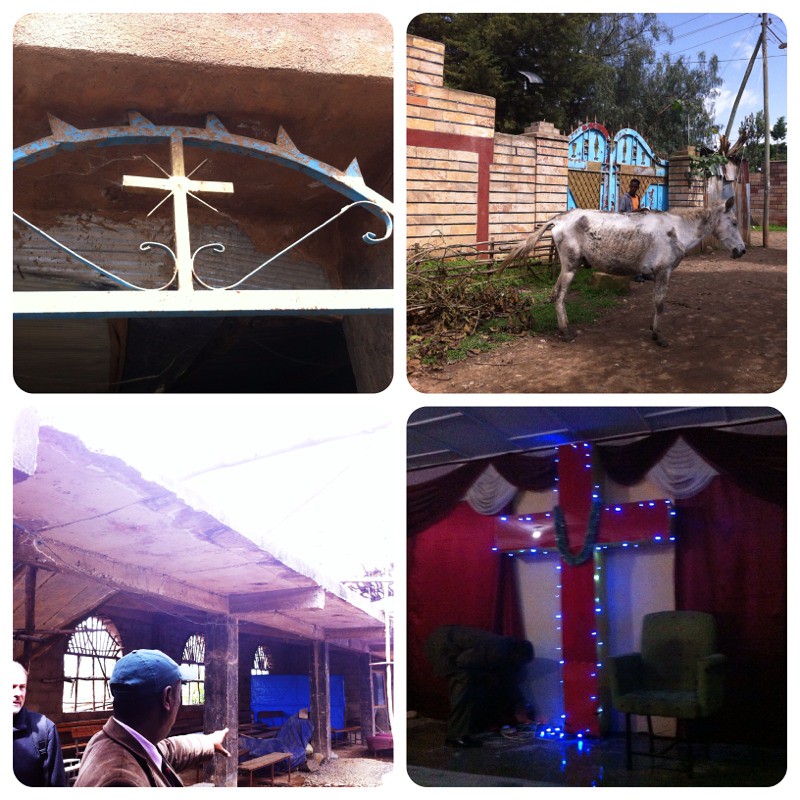
The congregation pictured above in the Ambo Parish has a regular Sunday attendance of 4,000 people. The pastor explained that they are adding a second story to the building to accommodate more people. This congregation is near a university and has an active outreach to college students.
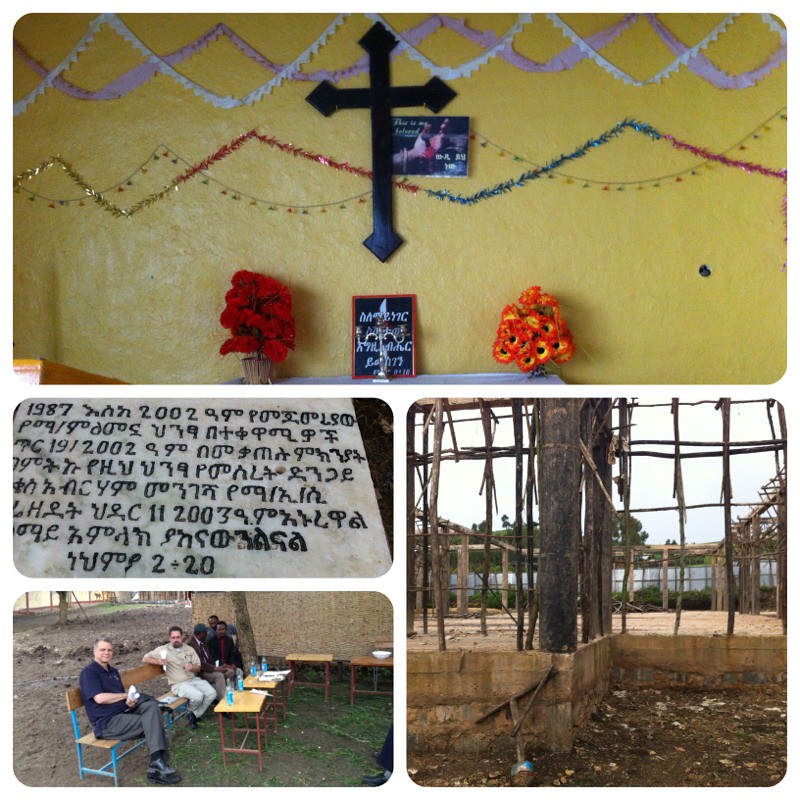
The final congregation that we visited Olo Nkomi was burned down in 2009 (the commemorative marker says 2002 because the Julian Calendar is 7 years behind the Gregorian calendar used in the West) by Ethiopian Orthodox zealots. The evangelist at this parish was stoned by the zeolites. Although he survived the attack, he has been permanently damaged. President Abraham explained that several EECMY congregations have been burned to the ground by Orthodox and Islamic radicals in recent years. He noted that the persecution has actually caused more people to flock to the EECMY... As Tertullian wrote in the 2nd century, "The blood of the martyrs is the seed of the church."
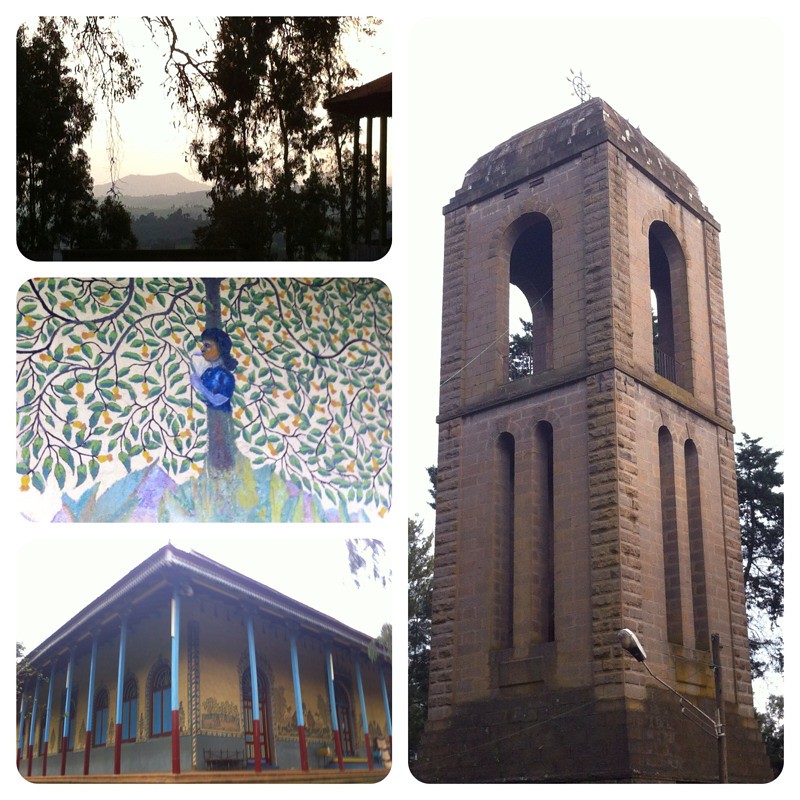
After we visited the EECMY congregation that had been burned down, we visited the nearby Ethiopian Orthodox monastery.
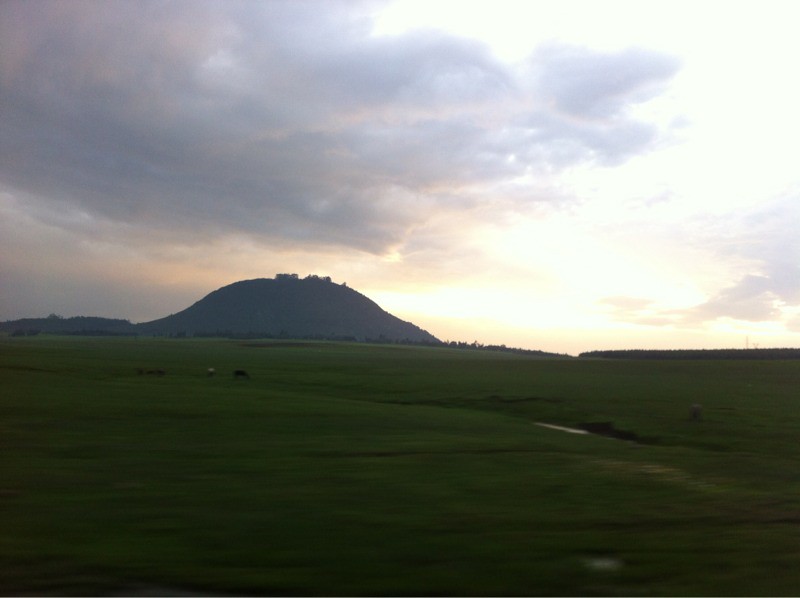
A Ethiopian Orthodox Monastery sits on top of the small mountain pictured above. We returned to our hotel after dark to prepare for an early departure at sunrise to the southern part of Ethiopia.
- Posted on 5 September 2012 by Rev. Dr. Albert Collver, LCMS Director of Church Relations.
- Posted using BlogPress from my iPad
Location:Dejazmach Belay Zeleke St,,Ethiopia
No comments:
Post a Comment